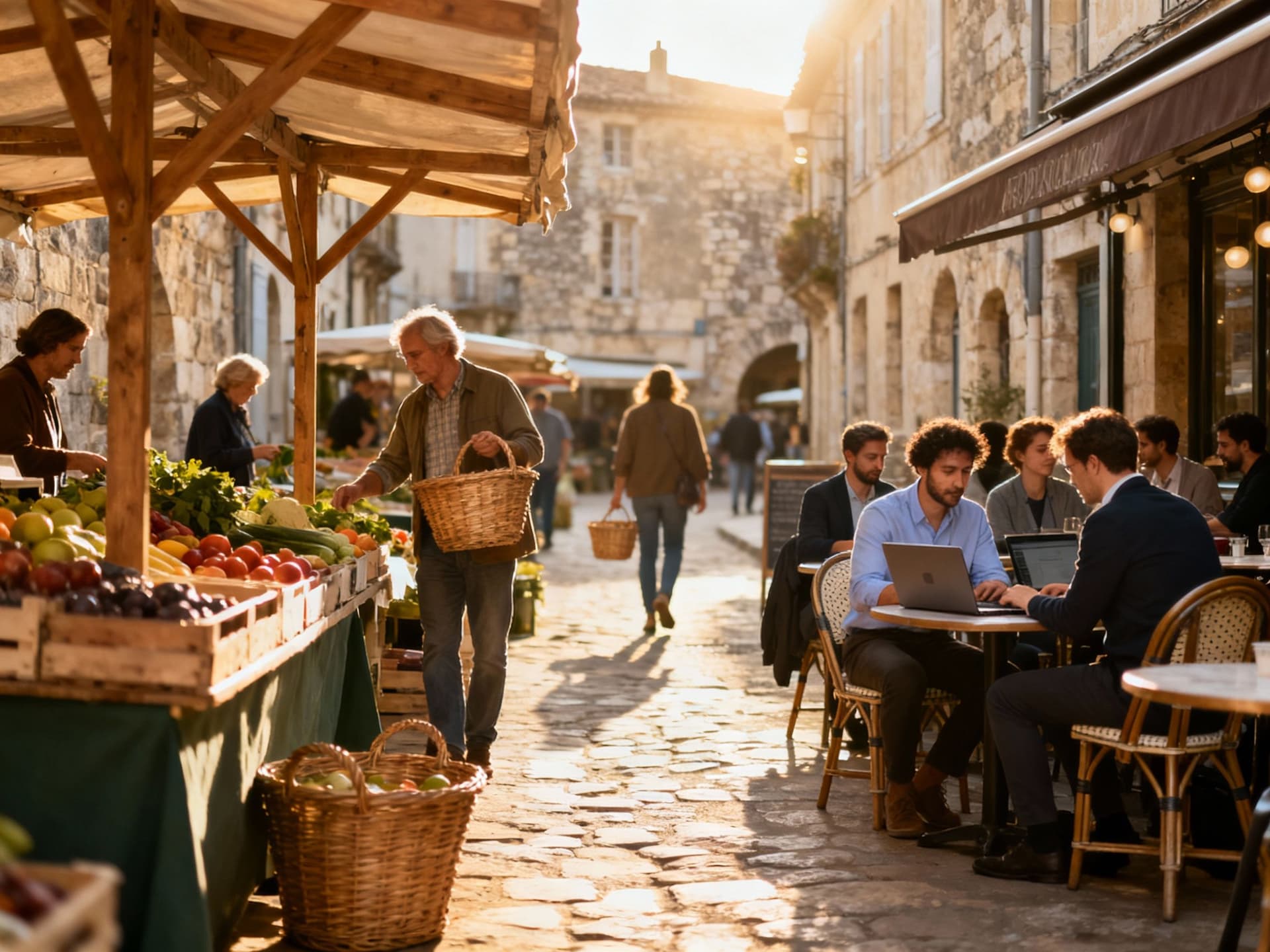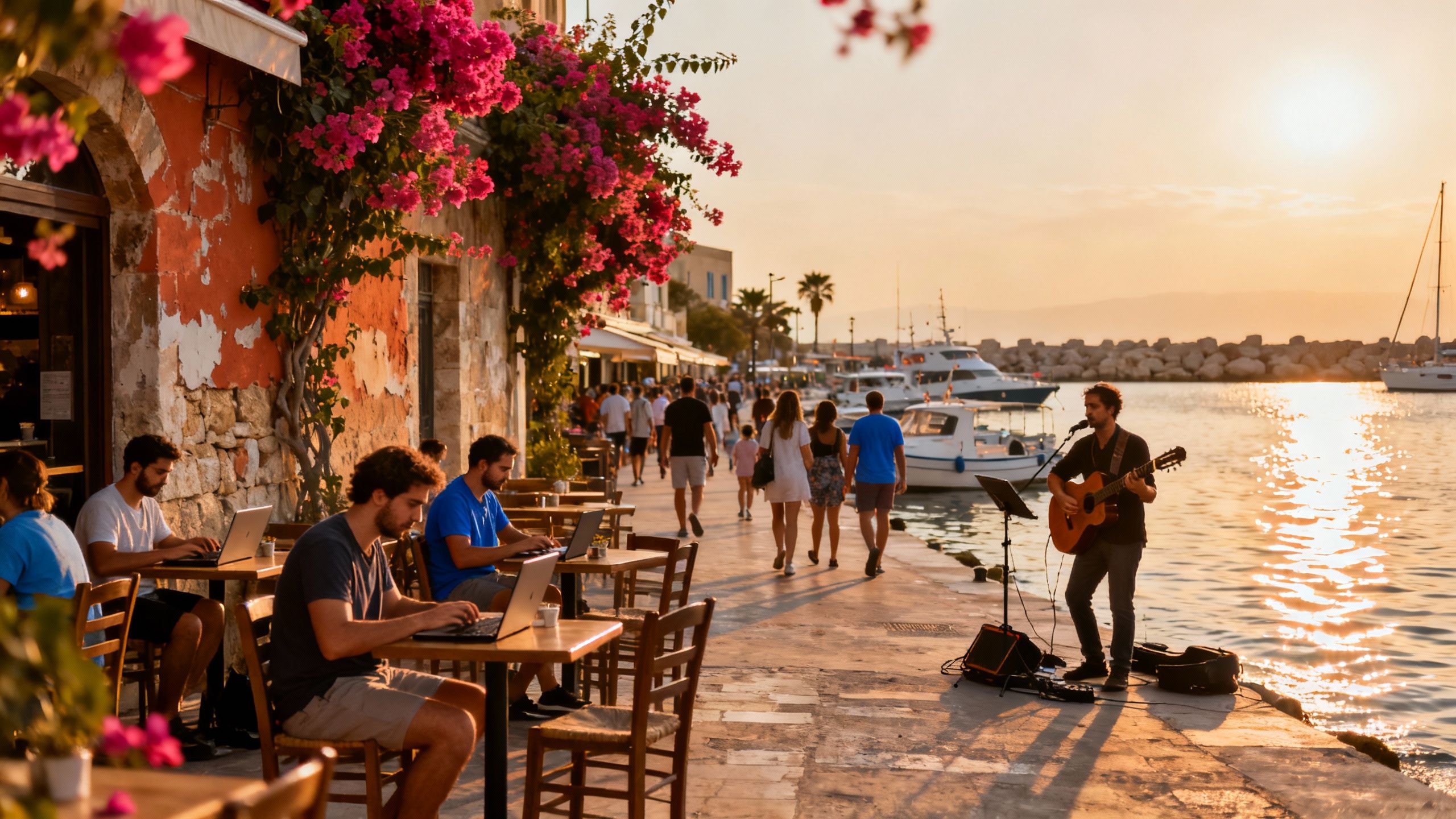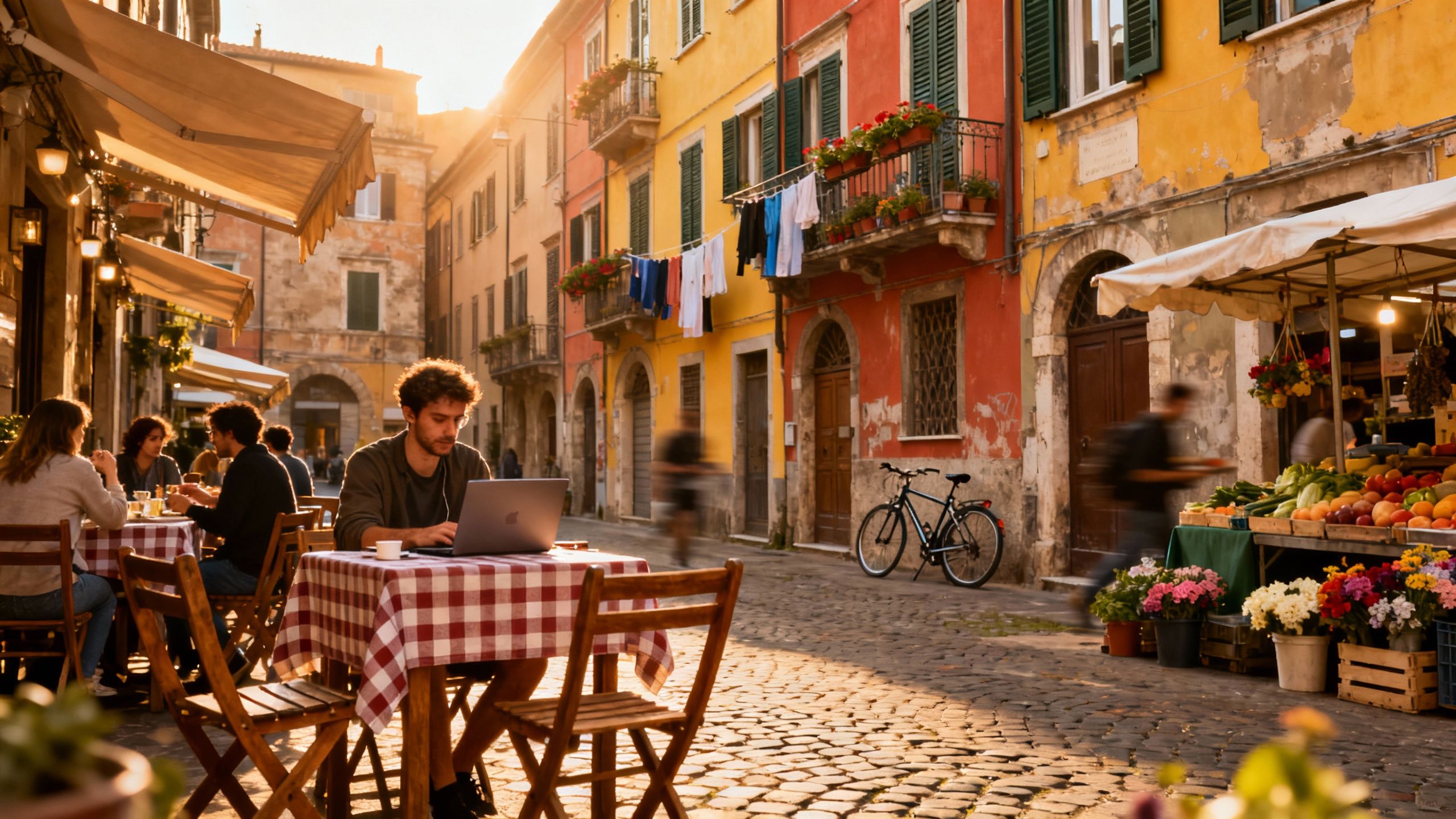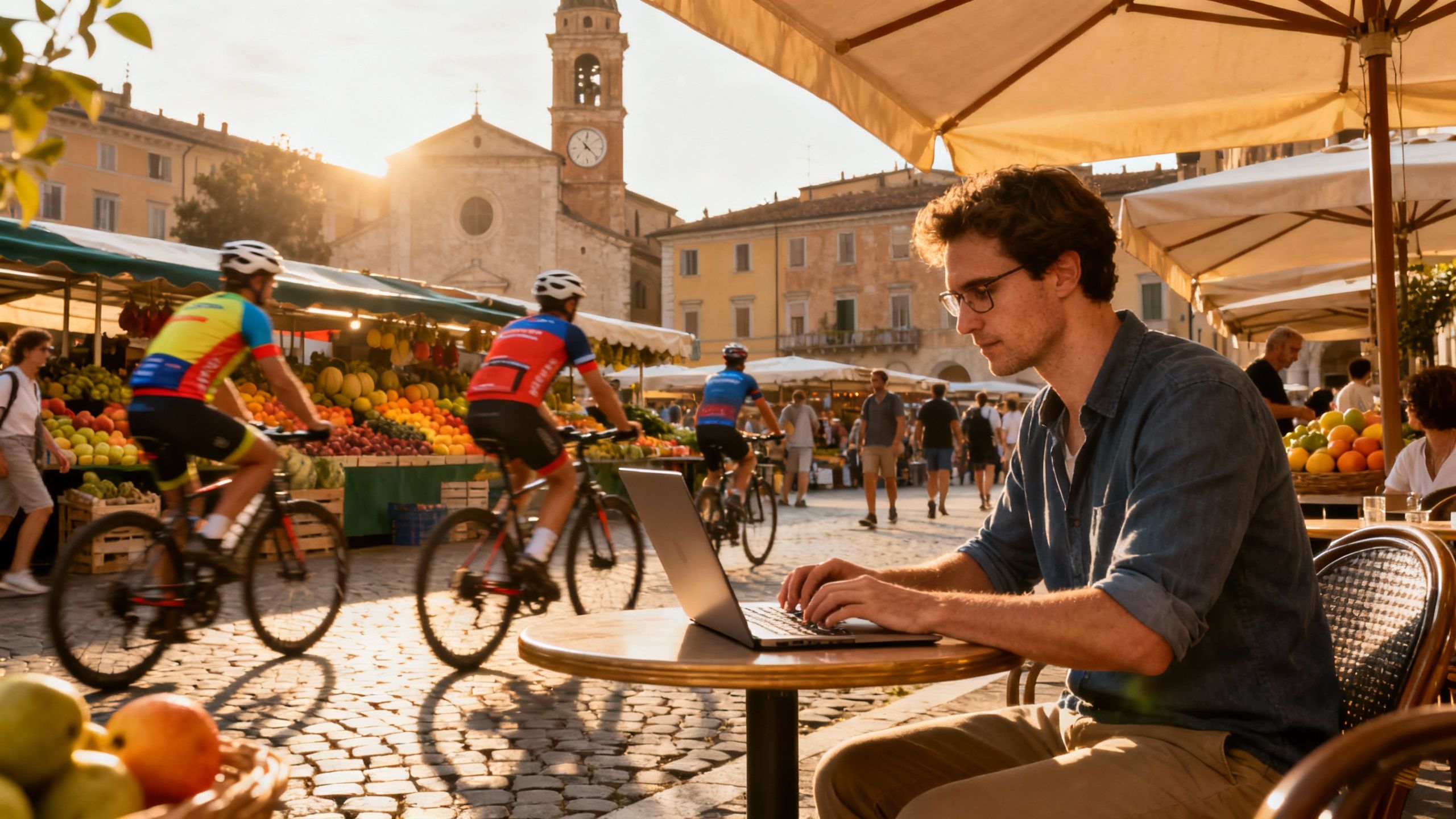The Neighbourhoods That Fit Your French Life
Fall in love with French neighbourhoods by testing lifestyle rhythms first — recent INSEE data shows stable prices, so pick the micro‑location that fits how you want to live.
Imagine finishing a work sprint on a sunny terrace in Lyon, grabbing a warm croissant from a corner boulangerie, then walking five minutes to a coworking space where everyone jokes in a mix of French and English. That slow‑fast rhythm — espresso, efficient work hour, long evening — is what draws nomads and families to France. This guide pairs that feeling with the facts you need to pick a neighbourhood that actually fits how you want to live, not just how it looks on Instagram.
Living the French life: what it really feels like

France moves at multiple paces at once: relaxed market‑weekend rhythms in provincial towns, brisk cultural intensity in Paris, and sun‑soaked leisure on the Riviera. Recent national data show prices stabilising then nudging up in early 2025 — not a runaway boom, but a market that rewards timing and locality. So you can chase that café‑life fantasy without blindly paying Paris prices everywhere; the secret is micro‑neighbourhood choice and the right local help.
Paris pockets vs provincial towns
Paris is a constellation of micro‑worlds: Le Marais hums with cafés and galleries, Canal Saint‑Martin is young and buzzy, while the 16th whispers old‑money calm. But remember: Paris is uneven — some arrondissements have cooled while others remain stubbornly pricey. Outside Paris, towns like Nantes, Bordeaux, and Annecy offer faster lifestyle upgrades for lower per‑m² costs, plus easier access to nature and family life.
Coastline and countryside: two very different promises
The Riviera (Nice, Antibes, Cannes) sells sunlit terraces and short boat trips, but it also demands premium for proximity to beaches and seasonal infrastructure. In contrast, rural Dordogne or Languedoc towns sell space, slower rhythms, and easier renovation projects — perfect if you want a garden office and produce markets on Saturday mornings. Each promise affects the property type you need: apartment for an urban nomad, village house for slow living, or a coastal flat for weekend‑centric life.
- Lifestyle highlights to test while house‑hunting
- Sip espresso at Café de Flore (Paris) and watch morning routines; try working from Anticafé (multiple cities) to test local Wi‑Fi and community vibes.
- Saturday market check: Marché Forville (Cannes) or Marché des Capucins (Bordeaux) for food culture and walkability.
- Evening strolls along Canal Saint‑Martin (Paris) or the Promenade des Anglais (Nice) to gauge noise, safety, and social life after dark.
Making the move: lifestyle‑meets‑property realities

Dreams need plumbing — literally and figuratively. If you picture working from a balcony, confirm light, patchy‑internet risks, and noise. If weekend markets are central, check delivery access and storage in the flat. Use short, practical checks to protect lifestyle outcomes before you sign, because the right apartment in the wrong street is still the wrong buy.
Property styles and how they shape daily life
Haussmannian flats in Paris mean tall ceilings, lots of light, and less outdoor space. Modern builds offer elevators and insulation but lower charm. Stone village houses give gardens and quiet but often require renovation and heating upgrades. Match property type to routine: daily commute length, need for dedicated home office, and the frequency of visitors.
Local experts who actually get nomads
Pick agents who speak your language of lifestyle, not just legal jargon. Good local agencies will pre‑check internet speeds, co‑working proximity, and municipal rules (short‑let bans, renovation permits). Ask for references from recent international buyers and examples of properties rented to remote workers — these details separate brochure sellers from life‑match finders.
- 6 steps to marry lifestyle and logistics
- 1) Spend 48–72 hours living like a local in target neighbourhoods — work from cafés, take the tram, and shop at the market.
- 2) Run a connectivity check: ask for past ISP speeds, test with Speedtest from multiple spots in the property, and check mobile coverage.
- 3) Confirm micro‑costs: local taxe foncière and co‑pro charges, winter heating costs, and expected renovation bids for older builds.
- 4) Vet short‑let regulations if you plan to rent: some cities restrict tourist rentals and require registration.
- 5) Work with a notaire early to review title, servitudes (easements), and co‑ownership rules — they’re non‑negotiable in France.
Insider knowledge: expat truths and seasonal realities
Expats often romanticise southern summers and Parisian springs — and then discover seasonal idiosyncrasies: August closures in small towns, winter heating costs in old stone houses, and sudden spikes in short‑term demand during festival weeks. Market data shows recent quarters of stability then modest growth, so seasonality matters for both viewing availability and negotiation power. Plan visits outside peak festival windows to avoid misleading impressions and inflated offers.
Cultural codes that change where you buy
French buying culture values paperwork, patience, and local relationships. Sellers expect a professionally prepared dossier; agents expect clear proofs of finance. Learn a few polite French phrases and respect local timings (shops closed Sunday afternoons in smaller towns) — these small courtesies open doors when offers are tight. Integration into community life often begins at the market or the local mairie events, not at networking mixers.
When the dream needs an honest reality check
A sea‑view headline can hide small print: parking nightmares, high co‑pro charges, or difficult access outside tourist season. Buy with a use‑case: full‑time remote work needs reliable, quiet space and broadband; a holiday bolthole needs easy transport and low maintenance. Prioritise what you’ll actually use every week, then let the agent optimise around those must‑haves.
- Red flags nomads should watch
- No documented broadband history for the building; inconsistent mobile signal in apartments; unusually high co‑pro charges without clear explanations.
- Large, unexplained reserve funds or repeated past syndic disputes — both can mean extra costs and headaches later.
- Properties repeatedly on market with price drops — dig deeper: structural or legal issues often hide behind slow sales.
In short: test the life first, document the facts, then move. This keeps the romance and removes surprises. Working with a local agency that understands nomads — and who will check broadband, co‑pro minutes, and mairie rules for you — turns dreamy possibilities into reliable daily routines.
If you’re ready to explore neighbourhoods that match your work rhythm and weekend rituals, start with a short scouting trip, gather a dossier of proof of funds, and ask an agent for a tech‑and‑lifestyle checklist before viewings. Want help narrowing options to match your ideal day? Reach out to a MoveSettleGo partner agency that specialises in nomad‑friendly neighbourhoods.
Dutch investment strategist guiding buyers to Greece and Spain; practical financing, tax, and portfolio diversification.


